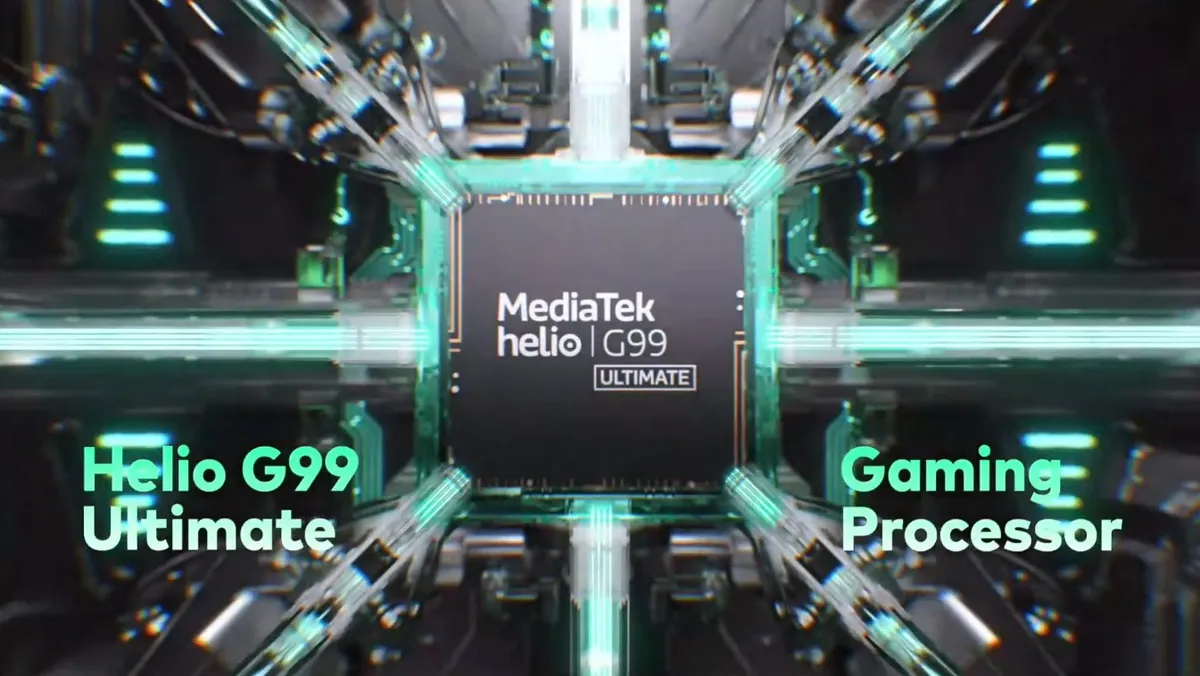Helio G99 vs Snapdragon 695: A Comparison
MediaTek Helio G99 and Qualcomm Snapdragon 695 are two popular chipsets commonly found in mid-range and budget smartphones. Both are manufactured using an advanced 6 nm process, yet each focuses on a different approach in terms of design and performance.
Snapdragon 695 comes with a 5G modem and uses a newer CPU design. On the other hand, Helio G99 focuses more on saving power and is made for phones that only support 4G. If you're curious about what sets these two apart, let's take a closer look at the key differences.
Specifications

Let’s start with the CPU. Snapdragon 695 uses two Cortex-A78 performance cores (Kryo 660) and six Cortex-A55 efficiency cores. The performance cores run at up to 2.2 GHz. Meanwhile, the Helio G99 uses two Cortex-A76 cores along with six Cortex-A55 cores, also reaching up to 2.2 GHz for the bigger cores.
In the GPU department, the Snapdragon 695 uses Adreno 619, while the Helio G99 has Mali-G57 MP2. Adreno 619 usually delivers better graphics performance. Because of this, Snapdragon 695 handles both light and heavy tasks more smoothly, while Helio G99 is better for those who care more about power saving and price.
When it comes to RAM, Helio G99 supports LPDDR4X up to 4266 Mbps, which is faster than Snapdragon 695’s usual support for LPDDR4X at 2133 MHz. However, both chipsets support UFS 2.2 storage, which helps apps and files load quickly.
For network support, Snapdragon 695 clearly has the advantage. It supports global 5G networks (sub-6 and mmWave), while Helio G99 is limited to 4G LTE Cat-13. Snapdragon 695 also comes with modern wireless features like Wi-Fi 6 (through FastConnect 6200), while Helio G99 only supports Wi-Fi 5.
Daily Performance
For everyday use like browsing, social media, and office work, Snapdragon 695 usually feels faster and smoother. Its Cortex-A78 cores offer better performance, especially in single-core tasks.
For example, in Geekbench tests, Snapdragon 695 gets a single-core score of around 2000. Helio G99 scores around 1800. This shows that phones with Snapdragon 695 can open apps faster and switch between heavy apps more easily. It gives a better experience for people who use their phones for many things at once.
Gaming Performance

For gaming, the difference in graphics between these two chipsets is easy to notice. The Snapdragon 695, with its Adreno 619 GPU, usually delivers higher frame rates when using the same graphic settings.
In several tests, the Snapdragon 695 can run games like PUBG Mobile at around 60 frames per second. Meanwhile, the Helio G99 often reaches about 46 fps. The same thing happens in Call of Duty Mobile, where Snapdragon 695 also performs better, hitting 60 fps compared to Helio G99's 43 fps.
However, in lighter games like Fortnite or Mobile Legends, the difference is not as big. In some tests, the Helio G99 even gives similar or slightly better results than the Snapdragon 695.
Overall, Snapdragon 695 is a stronger choice for gamers who often play heavy games or use many apps at once. Helio G99 is still a good option for casual gaming. It uses HyperEngine 2.0, a feature that helps manage power and resources more efficiently during gameplay.
Power Efficiency and Heat Management

Both chipsets are built using a 6 nm process. This means they are power-efficient and can help smartphones last longer on a single charge. MediaTek says the Helio G99 is made to use less power so users can enjoy all-day gaming without draining the battery too fast.
Tests show that the Snapdragon 695 has a thermal design power (TDP) of around 6 watts, while the Helio G99 is about 5 watts. This means phones with Snapdragon 695 might get warmer when running heavy tasks. Even so, the final result still depends on how well the phone handles heat and cooling.
In terms of charging speed, Snapdragon 695 supports Quick Charge 4+. This lets the phone charge up to 50% in just 15 minutes. Helio G99 does not have this kind of fast charging support.
Even though it lacks fast charging, Helio G99 still has strong power control. It comes with Resource Management Engine 2.0, which balances performance and battery use. This helps users enjoy longer gaming sessions without overheating or running out of power too quickly.
Conclusion
The Qualcomm Snapdragon 695 5G gives better overall performance and supports 5G networks. This makes it a more future-ready option, especially for users who care about speed and multitasking.
Meanwhile, the MediaTek Helio G99 stands out for its lower power use and affordable price. It is a solid choice for people who need a phone for everyday tasks, long battery life, and light gaming, without spending too much or needing 5G.
